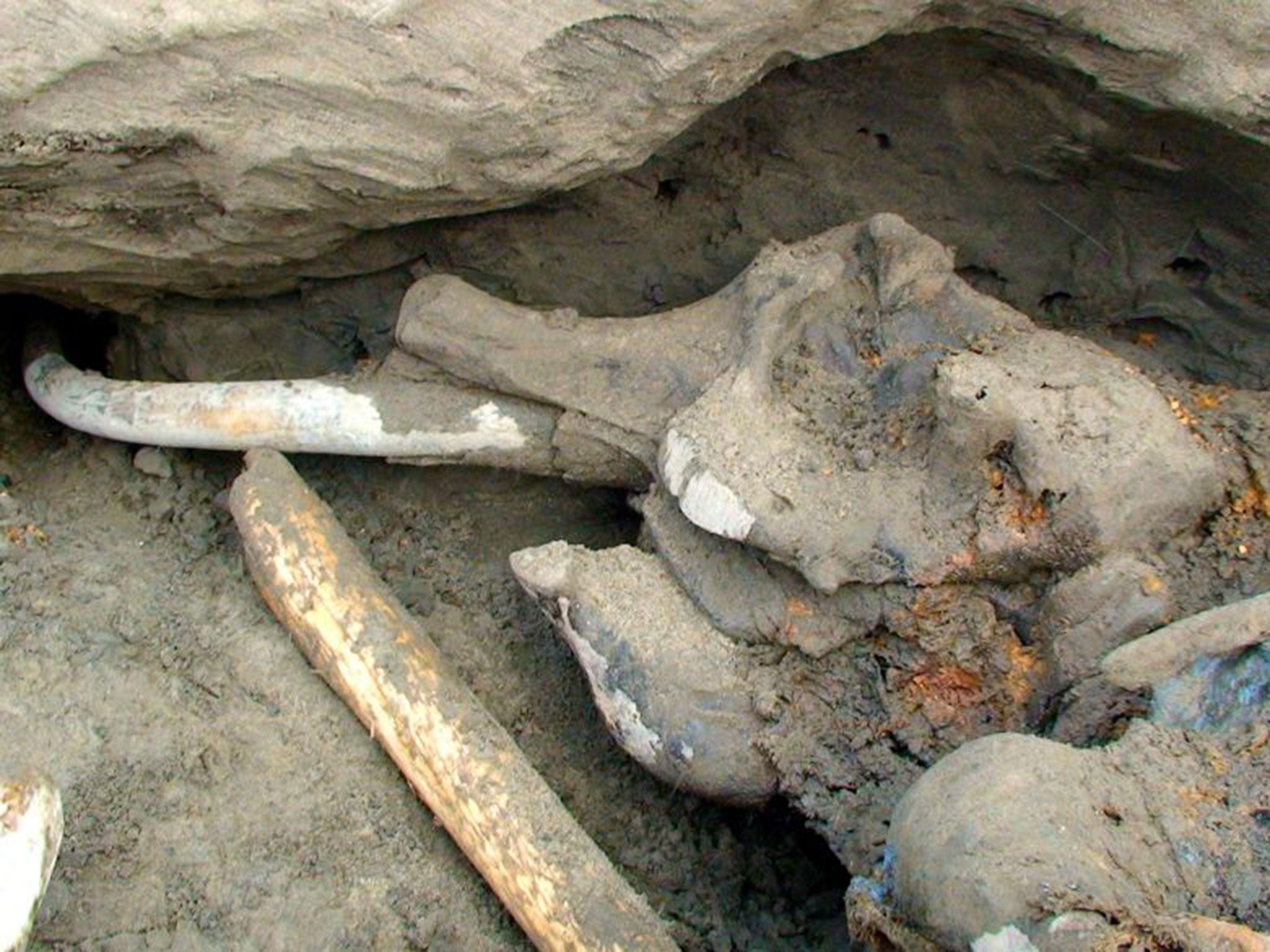Woolly mammoth unearthed in Russia reveals humans were active in Arctic 10,000 years earlier than previously thought
Body of mammoth indicates it was slaughtered for food about 45,000 years ago

Your support helps us to tell the story
From reproductive rights to climate change to Big Tech, The Independent is on the ground when the story is developing. Whether it's investigating the financials of Elon Musk's pro-Trump PAC or producing our latest documentary, 'The A Word', which shines a light on the American women fighting for reproductive rights, we know how important it is to parse out the facts from the messaging.
At such a critical moment in US history, we need reporters on the ground. Your donation allows us to keep sending journalists to speak to both sides of the story.
The Independent is trusted by Americans across the entire political spectrum. And unlike many other quality news outlets, we choose not to lock Americans out of our reporting and analysis with paywalls. We believe quality journalism should be available to everyone, paid for by those who can afford it.
Your support makes all the difference.A woolly mammoth dug out of the permafrost of northern Russia has cut marks to its bones and tusks indicating that it was slaughtered for food about 45,000 years ago – revealing that humans were active in the Arctic about 10,000 years earlier than previously thought.
The 15-year-old male mammoth died on the eastern banks of the Yenisei River bay in northern Siberia and its remains, including some soft tissues, were quickly preserved in the icy terrain after it was killed and butchered for its meat by human hunters, scientists said.
It is the earliest evidence of humans this far north and it could have implications for the dates when Stone Age people first crossed the Bering land bridge that once separated Siberia from present-day Alaska to colonise the New World for the first time, the researchers said.
A bone of the mammoth was found protruding from a coastal bluff by a 12-year-old Russian boy in 2012. A scientific analysis of the partially-complete skeleton and preserved soft tissues – including skin and a fatty hump on its neck – has found unequivocal evidence that the animal was hunted by humans carrying primitive weapons and tools made of bone and stone, scientists said.
“We have found a whole set of injuries on the bones which are evidence of human contact in the form of a mammoth-hunting event. It was injured several times by spears, mostly from the left side of the body, then partly butchered and for whatever reason left behind – they did not return,” said Vladimir Pitulko of the Institute for the History of Material Culture in St Petersburg.
“During the hunt, they would have used both light spears – projective thrown from a distance – and then heavy, thrusting spears to make serious wounds to finish off the animal. This is the kind of strategy in use in Africa by native elephant hunters and described ethnographically not so long ago,” said Dr Pitulko, the lead author of the study published in the journal Science.
It is likely that the mammoth was killed as it emerged from the water after crossing the river by hunters hiding in the tundra. “It was not a struggle, just a simple kill, almost murder,” Dr Pitulko said.
Radio-carbon dating of the bones showed that the mammoth died about 45,000 years ago. This is about 10,000 years prior to the earliest known evidence of human activity the Arctic region, he said.
“These finds allow us to understand that people were in the Arctic a really long time ago and they were migrating in the areas not too far from the Bering bridge area – which existed even 45,000 years ago,” Dr Pitulko said.
“So the gate to the New World was open and they might have been using it. This tells us about the opportunity they had rather than the ability to do it. It makes us think about it,” he said.
An analysis of the skeleton shows that the tongue had been cut out, probably as a ritual food or delicacy, and the mammoth had suffered blows to the base of the trunk to induce heavy bleeding, which is how elephants were often killed by native hunting in Africa, the scientists said.
Join our commenting forum
Join thought-provoking conversations, follow other Independent readers and see their replies
Comments